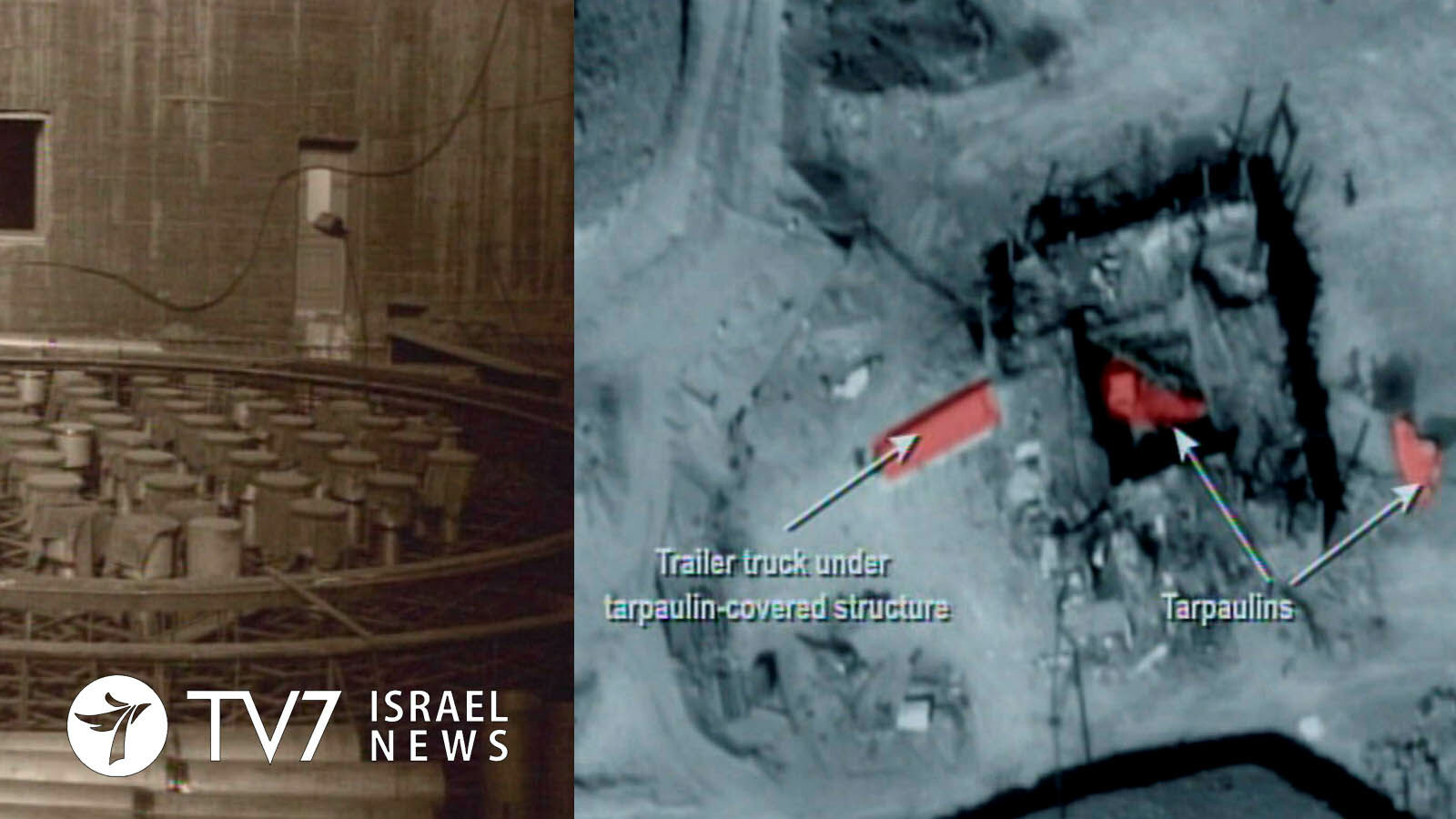The declassified document reveals evidence warning in 2002 that Syria was operating a clandestine nuclear project.
By Erin Viner
The never-before-seen report has just been cleared for publication by the IDF Intelligence Directorate on the 15th anniversary of Operation Outside the Box, also known as Operation Orchard.
A suspected nuclear reactor in the Deir ez-Zor region deep within Syrian territory was razed by Israeli Air Force (IAF) fighter jets on 6 September 2007.
The just-released 2002 special intel assessment read, “Recently it became known that the Syria Atomic Agency Commission is carrying out (or has carried out) classified projects that were previously unknown,” stressing that the activity raised suspicion over the start of an active military nuclear program.
The secret nuclear facility, also referred to as the Al Kibar Reactor, is believed to have been constructed with North Korea’s assistance and guidance.
“We knew there were some activities that may have been involved with possible atomic energy, but we didn’t know anything more than that in 2002. It took us a few years until we had very tangible proof,” then-Israeli Prime Minister Ehud Olmert told i24NEWS.
“There were about 50 different photos of the inside of an atomic reactor. There was no doubt about the nature of this and the purpose of this. It was made to build only one thing: an atomic bomb,” Olmert added, stressing, “We had to destroy this specific target, which was endangering the existence of Israel, and yet at the same time, make it in such a way that it would not trigger a full military confrontation between Israel and Syria.”
Announcement of the 2007 strike was not made for seven months, followed by declaration by the United States that the site had been an atomic facility designed for military purposes.
Investigation by the International Atomic Energy Agency (IAEA) detected uranium and graphite at the site in 2009, but held back from affirming it as a nuclear reactor until 2011.
Israel’s first public acknowledgement of the strike was in 2018, when then-IDF Chief of Staff Gadi Eizenkot stated, “The message of the attack on the reactor in 2007 was that Israel will not tolerate developing abilities that threaten the existence of the State of Israel. That was the message in 1981 (when Israel bombed Iraq’s Osirak Nuclear Facility), that was the message in 2007 and this is the future message to our enemies.”
The Eizenkot revelation was followed by a statement from then-IAF Commander Major General Amikam Norkin. “To some extent, the insights and lessons drawn from that attack led us to develop plans to build up our strength so that that we know today how to reach further, our munitions are more accurate and can penetrate deeper, and our crews are capable of carrying out even more complicated missions,” he stated.
The complex mission to prevent Damascus from potentially acquiring nuclear bombs was reportedly carried out following extensive intelligence, diplomatic, political and military consultation between Israel’s Prime Minister, Mossad agency, the IAD with the administration of then-US President George W. Bush.
A 24-metric ton payload was dropped on the site four F-15 and four F-16 warplanes in the unilateral Israeli strike. Footage of air crew apparently celebrating the successful mission after its completion have been released by the IDF Spokesperson’s Unit.
Letters formerly classified as top secret reveal commendation by Olmert and then-Defense Minister Ehud Barak to IAF Commander at the time, Major General Eliezer Shkedi. “This operation holds historical significance which will fortify Israel’s security and deterrence,” wrote Barak.
Meanwhile in related developments, Syria is alleging that Israel conducted an airstrike on the Aleppo International Airport yesterday, in the second reported attack in less than week.
According to the the Syrian Defense Ministry, the latest attack has completely caused the airport to shut down due to severe runway damage.
Only material damage was sustained during the 31 August missile attack, said a military source cited by Syria’s state news agency (SANA), after earlier reporting blasts were heard over the Arab Republic’s second largest city.
Last night’s attack was launched from the Mediterranean Sea, west of the coastal city of Latakia, at 8:16 PM local time (1716 GMT), said the Defense Ministry. Several of the Israeli missiles intercepted and shot down by Syrian air defenses, reported the SANA state news agency.
Israel has intensified strikes on Syrian airports to obstruct Iran’s increasing use of aerial supply lines to deliver weapons to its proxies in Syria and Lebanon including Hezbollah, regional diplomatic and intelligence sources told Reuters.
The London-based news agency also cited a commander in an Iran-backed regional alliance who said last week’s attack on the Aleppo airport occurred just ahead of the arrival of a plane from Iran.
For the past several years, Israel has acknowledged mounting hundreds of attacks on Iranian-linked targets in Syria where the Islamic Republic’s forces and proxy terror groups including Lebanon’s Hezbollah have become entrenched in deployments aimed at attacking Israel while assisting President Bashar al-Assad battle insurgents in the Syrian Civil War which erupted in 2011.
While the Jewish State rarely confirms such missions, the country’s political and defense leaders have repeatedly stated that Iran’s presence just over the northern frontier will not be tolerated.
